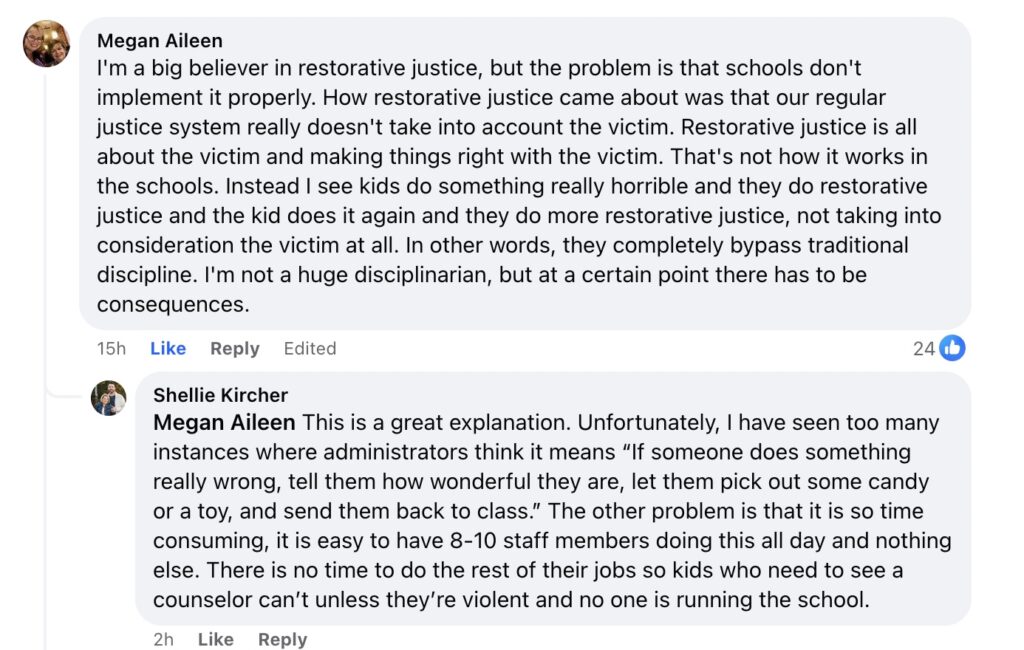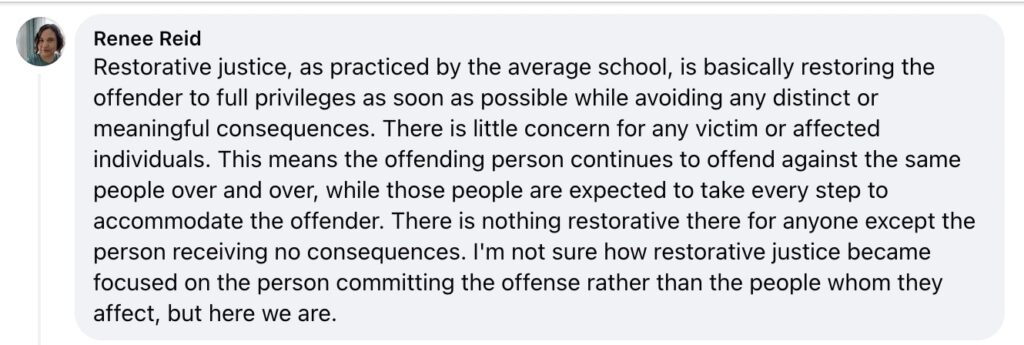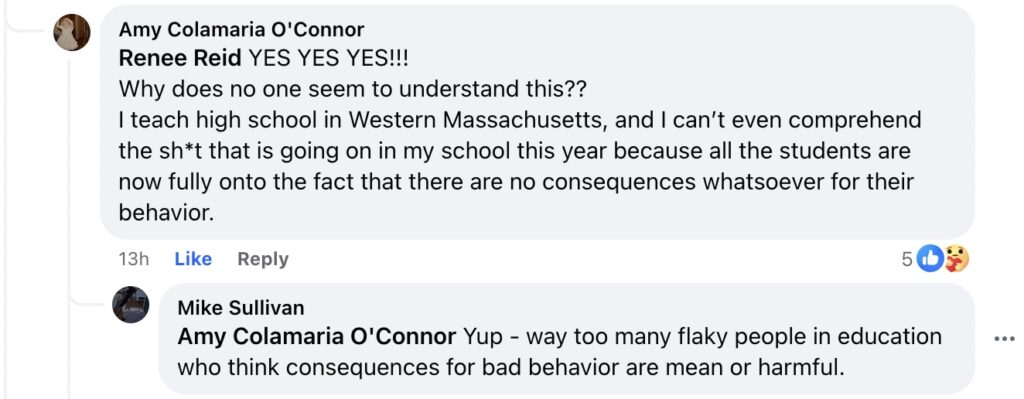Teachers across America are speaking up about the lack of controlled behavior in public schools. What changed? Why are teachers frustrated because behavior problems have become unbearable? Why are they leaving the profession in droves?
I believe there are many factors contributing to this problem. Parents who believe the school is a daycare center for their children are failing to do their job of raising respectful children. As a parental rights advocate in New Hampshire, I make no excuses for poor parenting. This is becoming a bigger problem that schools must deal with. But even if parents are failing to raise respectful children, that doesn’t mean that schools should be failing students, too.
The national fad is to provide students with Social and Emotional Learning (SEL), and more school counselors and social workers are being added to the payroll. You might be asking yourself, what does bad behavior have to do with any of this? Send these kids to the Principal’s office, where consequences will be administered. Sorry folks, a lot has changed since you were in school.
Classes have become chaotic with poor quality pedagogy practices. Instead of teachers teaching, teachers are told to have the kids work in groups. This will help them build collaboration skills for the workforce. Remember, public education is workforce training–it’s no longer about teaching them academics. The classroom can become chaotic, which then requires additional paraprofessionals in the room to help the teacher manage the class. This drives up the cost of education and requires a great deal of classroom management.
Schools use Project Based Learning or Inquiry Based Learning, which can add to problems in a classroom. Gone are the days of teacher-focused instruction which leads to higher levels of proficiency, kids are expected to teach each other in groups or go figure it out.
Social and emotional learning is supposed to help children self-manage their emotions and behaviors. But it can extend to group therapy and mental health assessments. This SEL data is collected, stored, and even shared without parents’ knowledge.
How does SEL replace consequences in the school for children who need that?
In this study, SEL Equity-based social-emotional learning (SEL): A critical lens for moving forward, they report: (emphasis added)
Authors King Lund, Hillis, Green, and Mofeld in their article, Mind-Sets Matter for Equitable Discipline: Aligning Beliefs to Practice Among Middle Grade Educators, also call attention to SEL. They write about how Restorative Justice Practices (RJP) offer a positive approach to disci-
pline while also providing middle school students opportunities to develop social-emotional skills (confict resolution and self-management). In contrast to other more traditional, punitive, and systemically inequitable models, RJP offers an approach where students of color are especially considered.
You can see the call to move away from the “punitive and systemically inequitable models” of consequences in schools. They then reference, “students of color are especially considered.”But does that work in the classroom? Many teachers across America are speaking up and talking about the behavior problems they are now expected to manage.
This article from Education Week attempts to explain Restorative Justice in the Classroom. But if you read the comments from educators, you will see that many of them don’t buy it.
It’s not that these teachers have “biases” or are racists, it’s that they know how kids work. They know that if you let kids off without any real consequences for their behavior, many will repeat bad behavior. This isn’t rocket science, if you’ve raised children you know that boundaries must be set, and consequences administered, if the child defies those boundaries.
Can there be other factors to consider when a child breaks through those boundaries? Of course. Some kids learn the first time, some go on to repeat their actions to see how far they can go.
Teachers have become desperate for SEL or other fads because administrators are failing to bring order and discipline to the school. Some teachers are better at managing their classrooms but some of these faddish practices set teachers up to fail. They are there to teach, not become the enforcers.
When we were kids, we didn’t visit the school counselor for mental health if we were misbehaving. This isn’t a mental health issue, but that’s how some of them are treated. Or when you finally see the administrators punish the school bully, sometimes they go and reverse it. What kind of message is that sending the child?
Parents need to do their jobs, but it’s no excuse for the school system to fail these kids, too. This is one big set-up for failure when these kids get older.
MORE HERE:
Restorative circles are unethical and have no place in schools
Nine Criticisms of School Restorative Justice







